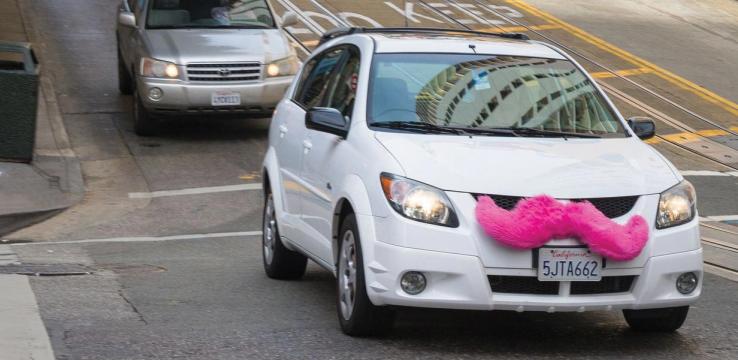A year after receiving cease-and-desist orders, companies like UberX, Sidecar and Lyft (the one behind those seemingly ubiquitous pink-mustachioed cars) now have the go-ahead to operate in California under new regulations. The term “peer-to-peer ridesharing” is frequently used to describe this industry but this year the California Public Utilities Commission (CPUC) clarified that these companies do not fit the traditional ride-sharing category and has established a new title of Transportation Network Companies (TNCs).
TNCs can now operate with legitimacy in California — the first state to create a regulatory framework for such businesses. This is a major milestone, and it opens the door to new business models that support mobility choice. While time will tell how existing TNCs and their user groups will react to these new regulations, the CPUC’s decision provides an opportunity for continued innovation to meet observed shifts in technology, social preferences and evolving urban mobility challenges. Now that TNCs are here to stay in California, they have several unique opportunities to affect passenger transportation.
A Dynamic Transportation System
Matching transportation capacity with demand in real time is a transportation planner’s utopia. In theory, the TNCs’ mobile apps help achieve this goal by allowing supply (drivers) to ramp up and down based on demand. Achieving this balance improves the reliability and efficiency of the overall transportation network without additional public resources or expensive infrastructure.
The Potential for TNCs to Serve New Markets
With new legal standing, TNCs can transform their business models and target new markets or embrace new roles. For example, TNCs could play an important role in providing last-mile connectivity for suburban job centers. Commuters journeying to areas with limited transit options and limited taxi service could benefit from the point-to-point, on-demand services that TNCs currently offer. TNCs also have the opportunity to address markets that have a critical need for improved mobility and access. Paratransit and volunteer driver programs could be supplemented with TNCs to provide better services at lower costs. TNCs could provide on-demand service to enhance paratransit trips that currently require reservations 24 hours in advance. Additionally, by using technology to tap into a larger pool of resources (i.e., potential drivers), TNCs have the potential to replenish small-scale volunteer driver programs with more effective service in areas where it is vital.
TNCs and Taxis: Learning From Each Other
Unquestionably, the taxi industry has been heavily impacted by the rise of TNCs. Prior to the CPUC’s decision, taxi companies tried to call attention to the regulations that constrained their industry while leaving TNCs free to provide the same service. The playing field has now been leveled, to some extent, though gaps remain. Representatives from the taxi industry and the San Francisco Municipal Transportation Association (SFMTA) contend that the differences in regulation between the services are still enough to push taxi drivers out of the industry. It has been suggested that a growing number of taxi drivers have switched to being TNC drivers, which is arguably more lucrative.
The rise of TNCs demonstrates that passengers increasingly value services that are tangible, fun and easy to use. Yet the CPUC regulations illustrate the importance of balancing consumer demand with societal responsibility. In San Francisco, taxis are required to provide equal access to all, including seniors and the disabled, and also to provide for social services. The CPUC decision pushes TNCs to guarantee a similar level of universal access (though it is unclear how this goal will be realized).
The taxi industry has begun to realize its need to evolve to better meet customer needs. Utlimately, taxis and TNCs will need to perform a balancing act: TNCs need to take on greater societal responsibility to prevent degrading access as their services grow; taxis need to be cautious of overlooking their role in public services as they shift toward modernization.
The Future of Mobility
The recent CPUC decision is a landmark precedent in reconsidering our future mobility options. However, the decision sets the rules, not the reaction. The landscape within the industry remains complex and continues to evolve. The rapid growth and expansion of existing TNC companies is reflective of an extremely competitive market, access to venture capital and a desire to scale. Similar to the experiences of early peer-to-peer carsharing companies, it is possible that in a few years today’s TNCs may exist in a completely different form (or maybe not at all).
TNCs are one of a growing number of transportation options that help provide the right fit for the trip. In a country dominated by single-occupancy vehicles, being able to access mobility from one’s smartphone is a compelling option — and one that will help reduce our solitary reliance on driving alone.

